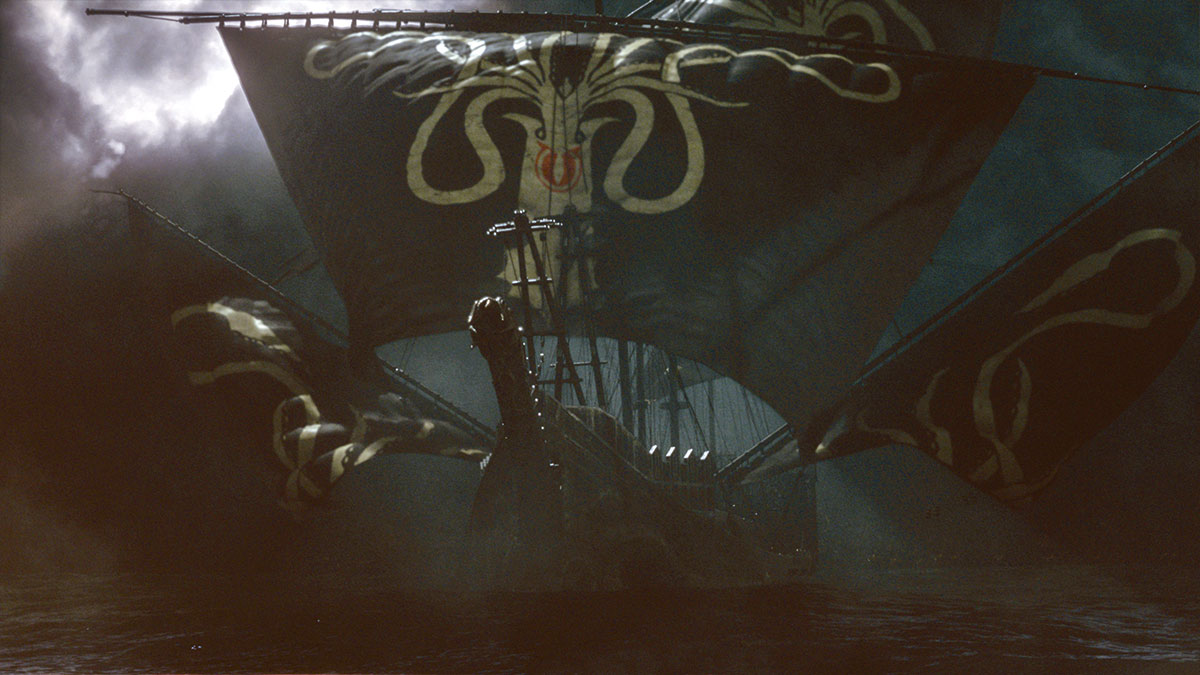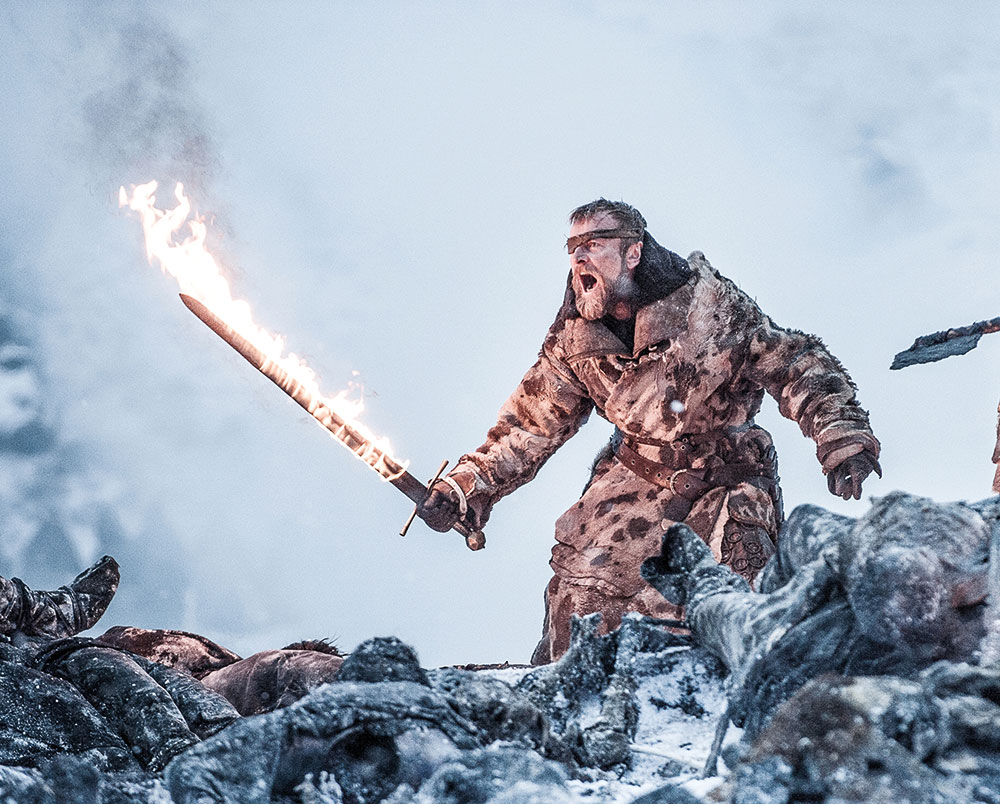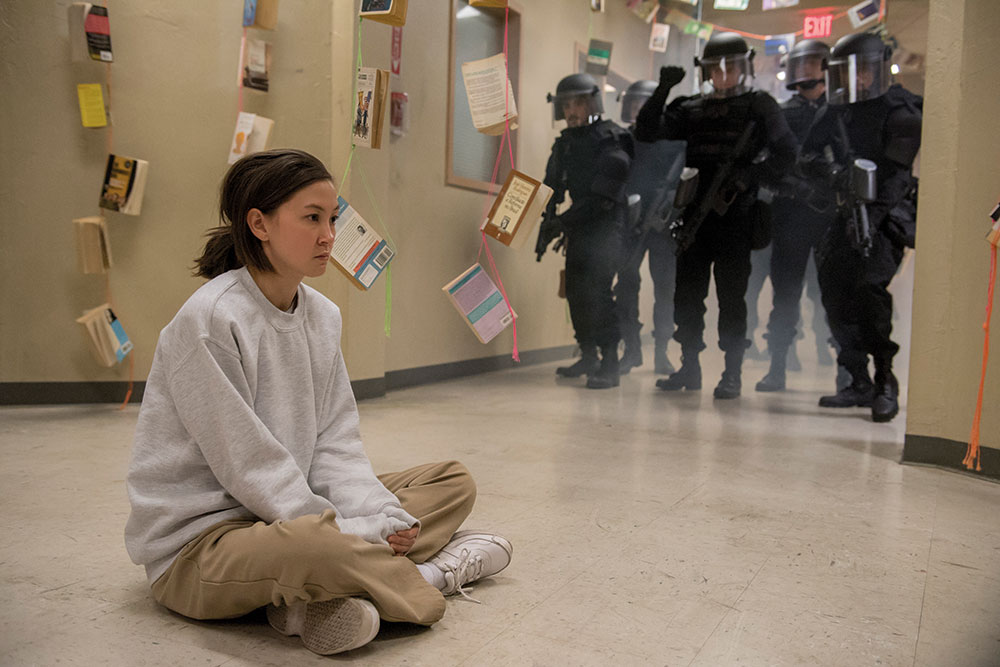
After more than 35 years of operation, TBI is closing its doors and our website will no longer be updated daily. Thank you for all of your support.
Fighting the pirates
 Illegal downloads and streams are directly impacting the TV business, but how far are they changing the distribution models of tomorrow, and what can be done to stop the flow? Robert Shepherd reports
Illegal downloads and streams are directly impacting the TV business, but how far are they changing the distribution models of tomorrow, and what can be done to stop the flow? Robert Shepherd reports
The global TV industry has always faced major challenges. Whether it was uncertainty surrounding digital switchover, the ongoing lack of diversity on and off-screen, the amount of shows exceeding any individual’s ability to watch them, or broadcasters having to fight for viewers’ attention across multiple platforms, things have never been easy.
Then there is piracy – the art of making valuable content available for little money or nothing. Of course, it’s nothing new, piracy has been going on for years. Back in the eighties, it was commonplace for schoolchildren to obtain and swap Betamax and VHS tapes of the latest movie releases. The difference today is we are no longer talking about a handful of videotapes and DVDs of questionable quality doing the rounds. We are seeing links to pretty much any TV show you care to watch and in HD to boot.
To put this into context, every member of the supply chain is now haemorrhaging money like never before. The pirating of film and TV cost France E1.35 billion (US$1.6 billion) in 2016 alone, according to a study by the French branch of global consultancy and accountancy group EY.
“In the ‘old days’, piracy of content was focused more on physical [hard] goods and was facilitated primarily by mafia and other organised crime groups,” says Marianne Grant, a UK-based rep from the Motion Picture Association of America (MPAA).
“Today, things are different – mainly because of the internet. The sophistication, scale and continuing involvement of organised criminals, as well as the behaviour and preferences of general consumers, require that we address piracy and work towards the goal of a responsible and safe internet using a variety of different tools and techniques. There is no single solution.”
Quite simply, anyone with internet access can visit a rogue site or use a perfectly legal device and download all sorts of high-quality content. Gone are the days of grainy footage and buffering. The end user is now even spared unwanted pop-up ads, and the interfaces are unashamedly slick.
 “The new challenge is Kodi add-ons,” says Mark Nakano (right), senior director product marketing and partnerships at content protection company NexGuard. “People used to watch downloaded content on laptops and PCs, but the experience wasn’t great.
“The new challenge is Kodi add-ons,” says Mark Nakano (right), senior director product marketing and partnerships at content protection company NexGuard. “People used to watch downloaded content on laptops and PCs, but the experience wasn’t great.
“Kodi add-ons are available through the Kodi application that can be run on a variety of OTT boxes such as Apple TV and Amazon Fire TV. The OTT boxes allow you to watch content on a big screen TV, and you can watch whatever you want and it’s good quality.”
David Briggs, chairman and co-founder of geo-data verification solutions and services provider GeoGuard agrees and says that what “astonishes” him is that a service like free and open-source media player software application Kodi, with its add-ons, is now very established for watching pirated content.
“Some data indicates that 15% of all UK households in January 2017 had access to a so-called Kodi box [from a December 2016 Redburn Research report] and in the US, it was 9% [according to a Sandvine Internet Phenomena report from this year],” he says.
“The implication of that research was that the 15% figure was effectively zero just twelve months before, so not only have we gone from zero to 15% household penetration, but one of the analyst reports said it made Kodi the most successful digital roll out in British TV history – something the industry wouldn’t want on its gravestone.”
 Needless to say, not all TV genres are prone to piracy. In fact, it’s only live sport and TV shows, particularly big budget (and mainly US-produced) dramas that have been targeted. The same was true back in 2010, when ABC drama Lost was reportedly the world’s most pirated show with approximately 5.94 million downloads. NBC sci-fi drama Heroes, Showtime’s Dexter (above), CBS sitcom The Big Bang Theory and Fox medical drama House helped make up the top five.
Needless to say, not all TV genres are prone to piracy. In fact, it’s only live sport and TV shows, particularly big budget (and mainly US-produced) dramas that have been targeted. The same was true back in 2010, when ABC drama Lost was reportedly the world’s most pirated show with approximately 5.94 million downloads. NBC sci-fi drama Heroes, Showtime’s Dexter (above), CBS sitcom The Big Bang Theory and Fox medical drama House helped make up the top five.
Still, some progress has been made in the piracy arena. England’s High Court issued a blocking order over the summer, which effectively criminalised the live streaming of English Premier League football. It’s now incumbent upon all internet service providers to shut down illegal links.
So why haven’t the courts meted out the same level of justice to other genres of TV? “The difference with live sport is that traditional TV is always being shown for free somewhere around the world,” Nakano says. “This makes it hard to completely restrict rights when it’s shown for free somewhere. With football, for example, it’s essential for leagues to protect the rights to the games.”
Ingrid Silver, media and entertainment partner lawyer at law firm Reed Smith, agrees and says that the issue is more about the difference in genres and the related logistics. “Sport is primarily of value in real time, so you are really aiming to target piracy at a particular point in time and around a specific event, which whilst being challenging, is at least a realistic aspiration,” she says.
“Trying to deal with other TV genres and illegal downloads in particular, is a lot more like playing ‘whack-a-mole’ – you can devote the resource and time to shutting one pirate source down, but that simply won’t stop others popping up.”
 The current title holder for the most illegally-downloaded show, which has held the unwanted distinction for past five years, is HBO juggernaut Game of Thrones (above), owing to its popularity on peer-to-peer file sharing protocol BitTorrent and Kodi. Incredibly, its seventh season pirated more than one billion times.
The current title holder for the most illegally-downloaded show, which has held the unwanted distinction for past five years, is HBO juggernaut Game of Thrones (above), owing to its popularity on peer-to-peer file sharing protocol BitTorrent and Kodi. Incredibly, its seventh season pirated more than one billion times.
The problem is also two-fold. Not only do the pirates have the freedom to post what they want and hide in the shadows, IP cloaking and virtual private networks (VPNs) make the end user all but uncatchable. Still, the authorities are more interested in catching the perpetrators than the consumers. So, while the industry chases it tail, producers through to distributors are taking a hit.
According to Lucas Bertrand, CEO of digital distributor MoMedia TV, producers are hit the hardest because they miss out on the most revenue, due to the nature of distribution deals and percentages.
“The more popular your show is, the more illegal distribution and consumption will occur,” he says. “This is both a problem of distribution and consumption. We all agree that if there is ubiquitous access at fair prices then consumption shifts from piracy to legal access.
“Therefore, those wishing to reduce access will see increased illegal competition, which can hurt producers and to a lesser extent distributor and legal platforms who have paid the fees for the programme.”
Nevertheless, Bertrand argues “on the flip side” it’s possible to use piracy data to help sell and value content where it is not available, but is being illegally downloaded or streamed.
An interesting point, but still it gets worse. Not only are the rights holders bearing the brunt of it, Nakano says piracy is also impacting creativity, and he points to evidence that some producers are starting to slow down.
“Carnegie Mellon University has published a study which looks at how piracy impacts creativity,” he says, “It shows that in parts of the US and the rest of the world where piracy is common, we see a correlation with the local decrease in creation of original content. So, if you’re in a high piracy area, you might see fewer new shows.”
It is certainly impacting the UK indie sector, with some ‘stolen’ shows even appearing on more august platforms. Barry Ryan, founder of Free@Last TV and executive producer of Sky 1 comedy-drama Agatha Raisin and the Quiche of Death, says his shows are constantly being uploaded in full on YouTube as well as on numerous torrent sites.
“We can’t police the internet single-handedly,” he says. “Put up a paywall and the people will find some way of penetrating it – it comes with the territory. It’s like standing on every street corner in 1999 trying to intercept DVD sellers: it’s not going to happen. Make a show that people are happy to pay for, then invent another one. That’s the game.”
Ryan adds that platforms and channels either have a business model or they don’t. “They can’t expect producers to take the hit for their leakages,” he says. “Shape up or shift off.”
While millions of people around the world stream premium content for free, they probably do so thinking nobody is getting hurt. After all, pay TV broadcasters make huge sums of money from both subscriptions and advertising, so it could be argued they will not miss a few dollars here and there.
Quite the opposite says Alice Skeats, director of communications at British intellectual property protection organisation FACT, who says the problem is piracy is often thought of as a victimless crime. “From set designers, to make up artists, from producers to runners; the creative industries in the UK support more than 1.8 million jobs,” she says. “These are people and their livelihoods at risk.
“Moreover, if content is pirated and made readily available online, it loses its value and production and distribution will find it increasingly hard to then sell the content to countries where it originally did not air.”
What are the main players doing to stop piracy? Nakano admits it will take time, but says the industry is adding watermarking to identify where the leak is. “Studios are using it and it’s a key part of the piracy tool chest,” he says. “Combined with anti-piracy solutions, it can close all illegal streams. While we know you can never stop all pirates, you can force them into a corner.”
However, Bertrand points to the lack of effective anti-piracy solutions across TV content distributors. “This is driven by a lack of understanding of what can be done to reduce illegal competition and a lack of pressure on distributors by producers.”
There are other problems associated with piracy too, like when networks try to license their content when it’s already available for free. Nakano says this has already become a problem.
“How do you compete with free?” he questions. “For example, if a US content owner is trying to license to Sky, why would Sky pay the content owner US$1 billion when the show can be found for free on Kodi boxes? It makes it much harder for content owners to get a premium for their content.”
Bertrand cites the BBC as a good example. Even though it is free-to-air in the UK, the content appears in the US on paid networks, who are in a position to ask how much the show is really worth if it is available for free. “It’s also an example of how it hurts broadcasters, because the BBC will want to licence abroad and make money,” he adds.
Yet while the industry scratches its head, Bertrand believes it could start improving things by making access more ubiquitous.
“The industry is built on restricting access to high value content to extract the value which leads to piracy incentives,” he says. “I can see a future where we will pay one or more subscription fees for ‘a more’ full access to film and/or TV content much like we see in the music business with the likes of Spotify, Amazon, Google and Apple all offering similar access and pricing to new and library content.”
You could argue this already exists to a lesser extent, with SVOD services provided by the likes of Amazon, Netflix and soon to be launched international OTT offerings from Disney and CBS.
Yet while the reasonable and simple pricing these services offer are a challenge to big pay TV broadcasters, the OTT services are being pirated themselves.
Indeed, Briggs says now that Netflix is in content ownership, it takes piracy more seriously – it recently became part of new media congloms coalition ACE (the Alliance for Creativity and Entertainment).
Netflix declined to put forward an official to talk about piracy, but a spokeswoman says the service’s push to secure global rights and release all originals simultaneously to global members will help address piracy.
“There’s been a notable reduction in piracy in countries where we operate such as the US and Canada where we have been the longest,” she adds, referring to Sandvine Internet Phenomena reports on BitTorrent.
Still, Briggs says the current pay TV model has to change or face consequences. “For the studios, it’s better if somebody is paying something, but they make around half of their money from content being sold exclusively,” he says.
“Once you erode that exclusivity, you depress content prices. Sky is struggling maintaining its subscriber numbers, and if people are choosing to watch Premier League football and other content on Hotstar in India for US$3 a month, or sign to up to HBO Go from another territory, it’s all going to amount to the same thing.”
As the old adage goes, the pirates are always one step ahead – but their current modus operandi is redefining the pay TV model as we know it. Can the TV industry respond?
Frederic Guitard, VP of anti-piracy services at TV technology firm NAGRA
As broadband and mobile internet becomes ubiquitous, the focus of piracy has shifted from signal theft to content sharing, taking a huge toll on rights holders and service provider revenues. In the digital world, content can be acquired from live broadcast streams or even from hacks into production servers, and the damage to potential revenues is tremendous.
NAGRA estimates that pay TV providers alone collectively lose up to US$7 billion per year because of content sharing.
Advanced cyberattacks that include ransomware attacks and stolen files being held for ransom have already affected media companies like Netflix, and most recently HBO, and although Netflix’s production subcontractor paid the requested amount, the hackers leaked the content anyway. Leaked content, whether through hacking or piracy, erodes the overall value of the entire content production and distribution chain. These threats are extremely serious and must be countered.



